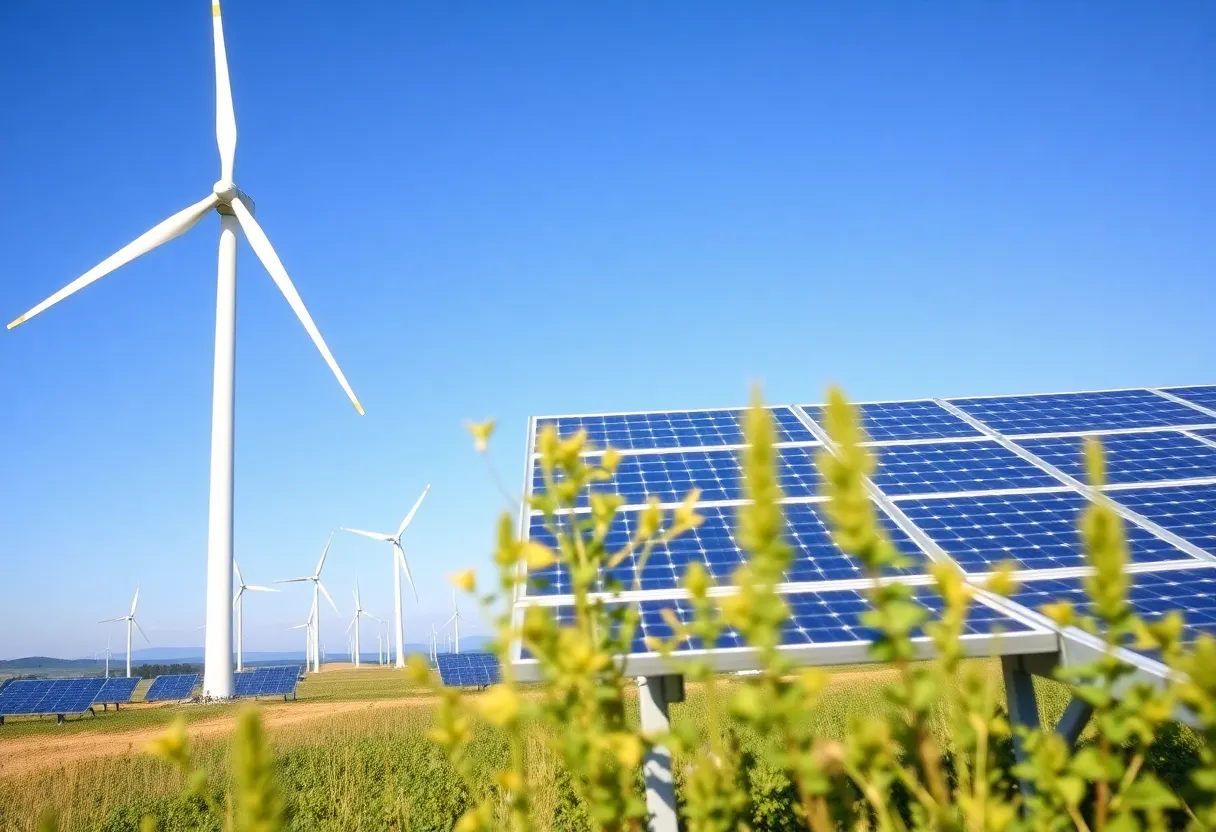Washington, D.C., August 19, 2025
News Summary
The IRS has released new regulations affecting tax credits for wind and solar facilities, emphasizing physical construction work. Effective September 2, projects must begin by July 4, 2026, to qualify, while the 5% Safe Harbor option has been eliminated, raising concerns about potential project delays and increased costs. Stakeholders must adapt to these stricter guidelines to ensure compliance.
Washington, D.C. – The Department of Treasury and the IRS have introduced new regulations impacting wind and solar facilities, as outlined in IRS Notice 2025-42, released on August 15, 2025. These changes, effective for projects starting construction on or after September 2, 2025, follow an executive order from President Donald Trump aimed at eliminating subsidies for unreliable and foreign-controlled energy sources, thereby tightening the requirements for claiming tax credits under Sections 45Y and 48E, collectively referred to as the Tech-Neutral Tax Credits.
The new regulations are particularly pertinent due to the looming construction deadline of July 4, 2026, established by The One Big Beautiful Bill passed in July 2025. This legislation mandates that tax credits for wind and solar facilities will be discontinued for projects placed in service after December 31, 2027, unless construction indeed commenced prior to the July deadline. Consequently, the clarifications provided in IRS Notice 2025-42 are crucial for industry stakeholders and investors, with significant implications for the renewable energy sector.
One major change involved in the new guidance is the elimination of the 5% Safe Harbor option that previously allowed certain projects to qualify for tax credits. While the Physical Work Test remains unchanged, this test now emphasizes physical construction efforts rather than a financial metric for determining when construction begins. This shift means that only verifiable onsite construction activities or offsite work within binding contracts, including equipment manufacturing, will validate a project’s claim for tax credits. This focus on tangible work is indicative of a stricter interpretation of the guidelines.
The Continuity Safe Harbor provision still exists, permitting facilities that begin construction to qualify for tax credits if they are placed in service within four years after construction kicks off. Although documentation for a continuous construction program is recommended, new guidance lacks specific instructions on what this documentation should entail. Furthermore, solar facilities producing less than 1.5 megawatts can still utilize the previous 5% Safe Harbor provision.
Industry experts have expressed concerns that the revised guidelines may slow down the development of renewable energy projects. Critics argue that the new requirements create obstacles that may elevate costs and delay the deployment of low-carbon energy solutions. These concerns highlight a growing tension within the Republican party, particularly between its moderate and conservative factions, over the regulation of renewable energy credits during the legislative processes.
Proponents of the guidance, including some lawmakers, assert that this stricter framework could help the industry meet energy demands efficiently. By enforcing a more rigorous interpretation of the construction-start requirements, the IRS aims to ensure that projects claiming tax credits are genuinely contributing to renewable energy production.
As the deadline approaches, developers and industry stakeholders must closely review these changes to adapt their strategies and ensure compliance with the new guidance.
Frequently Asked Questions
What are the new IRS regulations for wind and solar facilities?
The new IRS regulations, outlined in IRS Notice 2025-42, impose stricter requirements for the construction of wind and solar facilities, focusing on physical work rather than financial benchmarks to determine the start of construction.
How do the changes affect tax credits?
The changes eliminate the 5% Safe Harbor option, meaning projects must engage in physical construction activities or offsite work under binding contracts to qualify for tax credits.
What is the deadline for beginning construction?
Projects must begin construction by July 4, 2026, to qualify for tax credits under the new guidelines.
Are there any provisions for smaller solar facilities?
Yes, solar facilities with a maximum output of less than 1.5 megawatts can still take advantage of the 5% Safe Harbor provision in the new guidelines.
Key Features of the New IRS Guidance
| Feature | Description |
|---|---|
| Regulation Name | IRS Notice 2025-42 |
| Effective Date | September 2, 2025 |
| Construction Deadline for Tax Credits | July 4, 2026 |
| Elimination of 5% Safe Harbor | No longer available for most projects |
| Physical Work Test | Must demonstrate significant physical work |
| Continuity Safe Harbor | Valid for four years after construction begins |
| Exemptions for Small Solar Facilities | Facilities under 1.5 megawatts can still use 5% Safe Harbor |
Deeper Dive: News & Info About This Topic
HERE Resources
Texas Solar Companies Rally to Defend Clean Energy Tax Credits
New Bill Addresses Texas’ Growing Energy Demands
Billions in Clean Energy Projects Canceled Amid Uncertainty
Additional Resources
- The Hill: Treasury Guidance on Wind and Solar Tax Credits
- Utility Dive: Treasury Commence Construction for Wind and Solar Tax Credits
- Wall Street Journal: European Renewable Stocks Rise After U.S. Tax Credit Guidance
- Recharge News: Wind Power Stocks Surge After U.S. Tax Credit Specification
- Politico Pro: Treasury Reportedly Tightens Screws on Tax Credits for Renewables
Author: STAFF HERE HOUSTON TX WRITER
The HOUSTON STAFF WRITER represents the experienced team at HEREHouston.com, your go-to source for actionable local news and information in Houston, Harris County, and beyond. Specializing in "news you can use," we cover essential topics like product reviews for personal and business needs, local business directories, politics, real estate trends, neighborhood insights, and state news affecting the area—with deep expertise drawn from years of dedicated reporting and strong community input, including local press releases and business updates. We deliver top reporting on high-value events such as Houston Livestock Show and Rodeo, Art Car Parade, and Chevron Houston Marathon. Our coverage extends to key organizations like the Greater Houston Partnership and Houston Area Urban League, plus leading businesses in energy and healthcare that power the local economy such as ExxonMobil, Schlumberger, and Houston Methodist. As part of the broader HERE network, including HEREAustinTX.com, HERECollegeStation.com, HEREDallas.com, and HERESanAntonio.com, we provide comprehensive, credible insights into Texas's dynamic landscape.





